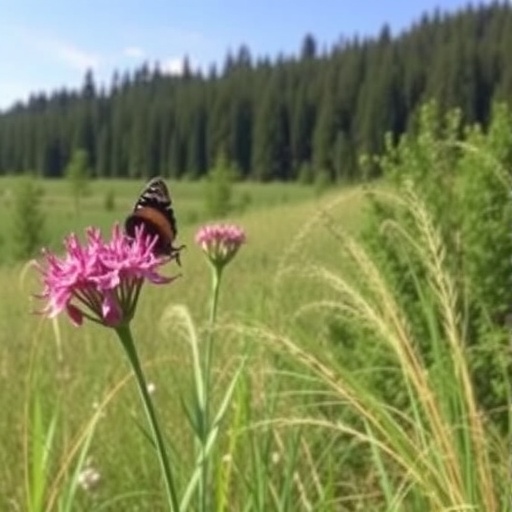In the realm of environmental science, a shift toward democratizing knowledge and integrating public participation has gained significant traction. A groundbreaking study published in the journal Ambio, titled “Citizen science contributions to environmental risks assessment and management: A systematic map and qualitative evidence synthesis,” brings to the forefront the value of citizen science in addressing environmental challenges. This systematic map, led by researchers Marija Suškevičs, Chika C.C. Obi, and Jonathan T. Storie, highlights not only the contributions made by everyday citizens but also underscores the importance of their insights in shaping environmental management practices.
The phenomenon of citizen science refers to the collaborative efforts of volunteers who contribute to scientific research, often collecting valuable data that professional scientists may not have the bandwidth to gather. This innovative approach has emerged as a tool to bridge the gap between scientific expertise and community engagement, with profound implications for environmental risk assessment. The study meticulously analyzes qualitative evidence, depicting how citizen science can support and enhance traditional scientific methodologies.
One of the most notable aspects of this research is its systematic mapping of existing literature. The authors conducted a comprehensive analysis of various studies that have integrated citizen science into environmental risk assessment frameworks. This extensive review identified key themes and trends, providing a holistic view of the current landscape of citizen science contributions. Notably, the findings suggest that diverse citizen participation can enrich data quality, enhance community awareness, and foster a greater sense of ownership regarding local environmental issues.
Amidst the growing prevalence of environmental hazards—whether they are related to pollution, climate change, or biodiversity loss—the necessity for effective response strategies is paramount. This research draws attention to the pivotal role citizen science can play in identifying and prioritizing environmental risks. By involving local communities in data collection and analysis, researchers can obtain a more nuanced understanding of specific challenges that might otherwise be overlooked in conventional assessments.
The qualitative evidence synthesis further elucidates the numerous benefits of citizen involvement in scientific endeavors. The research indicates that community members often possess unique, localized knowledge that can be instrumental in contextualizing environmental risks. This integration of local insights not only enhances data accuracy but also facilitates tailored interventions that resonate with those most affected by such issues. The authors illustrate through case studies how citizen-driven initiatives have led to tangible improvements in environmental management decisions, resulting in better outcomes for both ecosystems and human health.
Moreover, the social dimension of citizen science cannot be underestimated. This study emphasizes the potential of citizen involvement to act as a catalyst for social change. When community members engage actively in scientific processes, they develop a stronger connection to their environment, which can foster advocacy and support for sustainable practices. In this light, citizen science contributes not only to environmental assessments but also to empowering individuals to champion their local ecosystems.
While the benefits are profound, the research also addresses the challenges associated with citizen science. The authors note that ensuring the reliability and validity of data collected by non-professionals is a significant concern. To mitigate this issue, the study recommends robust training programs and the establishment of clear protocols to guide citizen involvement. Additionally, ongoing communication between scientists and volunteers is essential for fostering trust and maximizing the quality of the collected data.
The interplay of technology and citizen science further enhances the potential for effective environmental monitoring. The advent of mobile applications, social media platforms, and online databases has revolutionized the accessibility of scientific data collection. Citizens can now document their observations and share them with researchers in real time, creating a dynamic and responsive feedback loop that is essential for timely environmental management. This technological integration allows for scalability, turning localized observations into valuable datasets that can inform broader ecological assessments.
As the study advocates for wider adoption of citizen science methodologies, it also calls for policy changes that recognize and institutionalize these contributions. Policymakers can harness the collective intelligence of citizen scientists to inform decision-making processes, particularly in areas susceptible to environmental degradation. By embedding citizen science into regulatory frameworks, governments can ensure that community voices are not only heard but are integral to shaping environmental strategies.
In light of the results, this research highlights a profound realization: citizen science is not just an adjunct to traditional scientific inquiry but rather an essential component of a more responsive and inclusive approach to environmental management. The full potential of citizen science remains to be unlocked, calling for collaborations between scientists, communities, and policymakers alike. As we face an increasingly uncertain environmental future, embracing this collaborative spirit may prove vital in crafting sustainable solutions.
In conclusion, the systematic map and qualitative evidence synthesis presented by Suškevičs and colleagues illuminate the transformative power of citizen science in environmental risks assessment and management. By collaborating with everyday citizens, researchers can tap into a wealth of knowledge and expertise that enhances both scientific rigor and community resilience. This study paves the way for future exploration into the mechanisms of citizen engagement, offering a roadmap that emphasizes inclusivity and participation in the realms of science and environmental stewardship.
As the field of citizen science continues to evolve, informed by the findings of this research, the prospects for a more sustainable and ecologically attuned society grow ever brighter. As we cultivate these connections between science and community, we stand to not only understand our planet better but also to preserve it for generations to come.
Subject of Research: Citizen science contributions to environmental risks assessment and management
Article Title: Citizen science contributions to environmental risks assessment and management: A systematic map and qualitative evidence synthesis
Article References:
Suškevičs, M., Obi, C.C., Storie, J.T. et al. Citizen science contributions to environmental risks assessment and management: A systematic map and qualitative evidence synthesis.
Ambio (2025). https://doi.org/10.1007/s13280-025-02305-7
Image Credits: AI Generated
DOI: 10.1007/s13280-025-02305-7
Keywords: Citizen science, environmental risks, community engagement, ecological assessment, public participation, sustainable practices, data collection, scientific inquiry, policy change.




